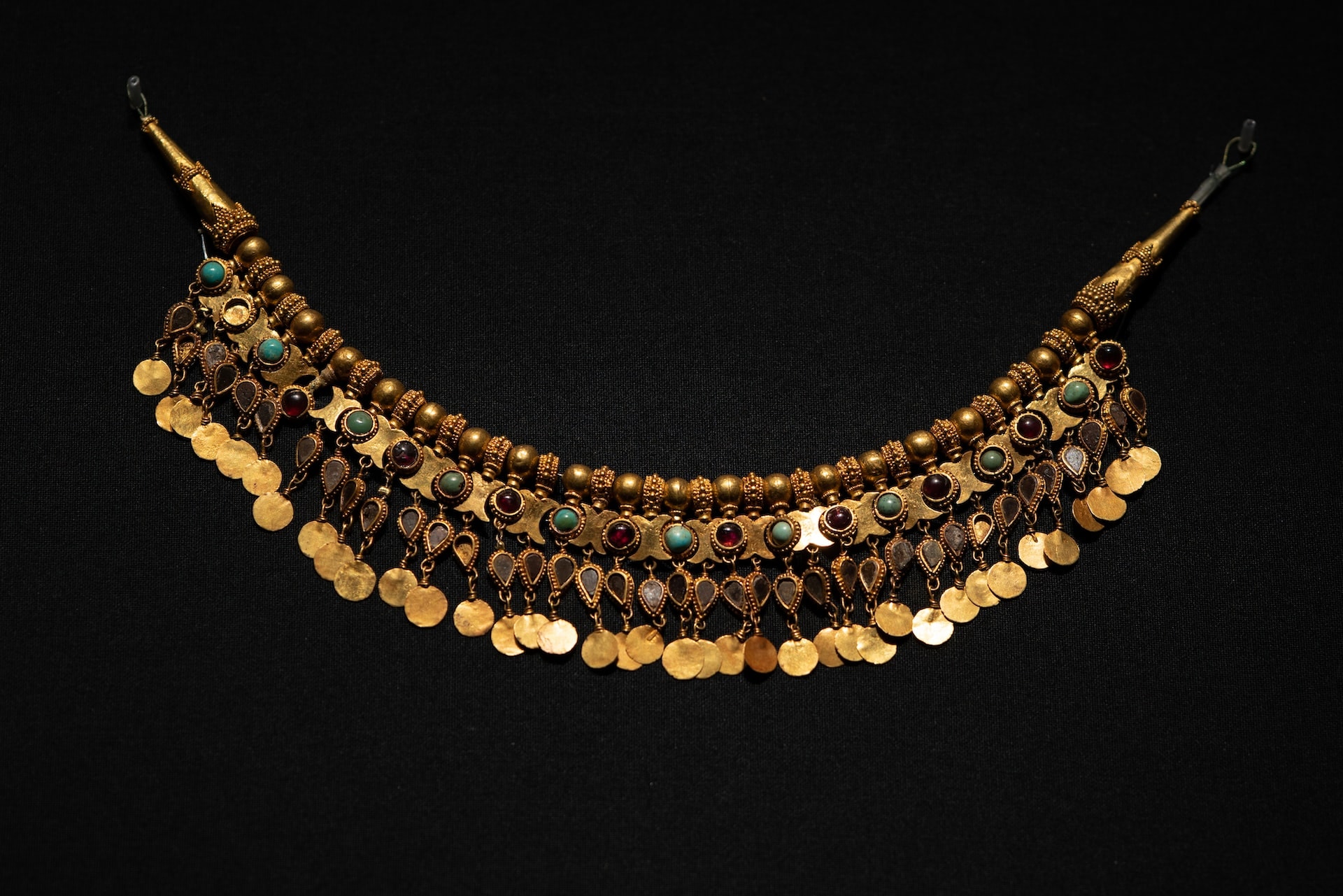
Table of Contents
From ancient times to modern days, necklaces have journeyed from basic to intricate. Every culture has embraced them, evolving their styles from raw, natural materials to today’s mix of precious metals and gems. These pieces have moved beyond simple adornments to become symbols of elegance.
Let’s explore how necklaces have changed over time, reflecting the story of human sophistication.
Where Did Necklaces Originate?
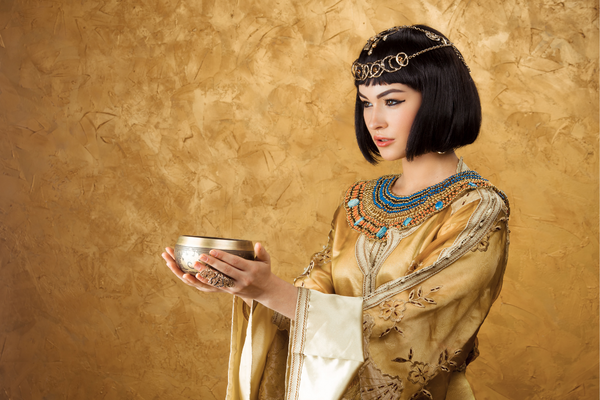
For centuries, both men and women have adorned themselves with jewelry for decoration, status, or fashion, and sometimes to ward off evil or attract good luck. Hunters provided the materials for these early adornments, turning claws, teeth, horns, and bones into accessories.
Organic materials such as bones, feathers, plants, and shells became the components of the first necklaces. Artisans in ancient Ireland and Scotland between 1800 and 1500 BC crafted torcs, neckpieces of twisted metal. The oldest jewelry found to date is a 25,000-year-old fishbone necklace discovered in a Monaco cave.
The Use of Necklaces in Ancient Egypt
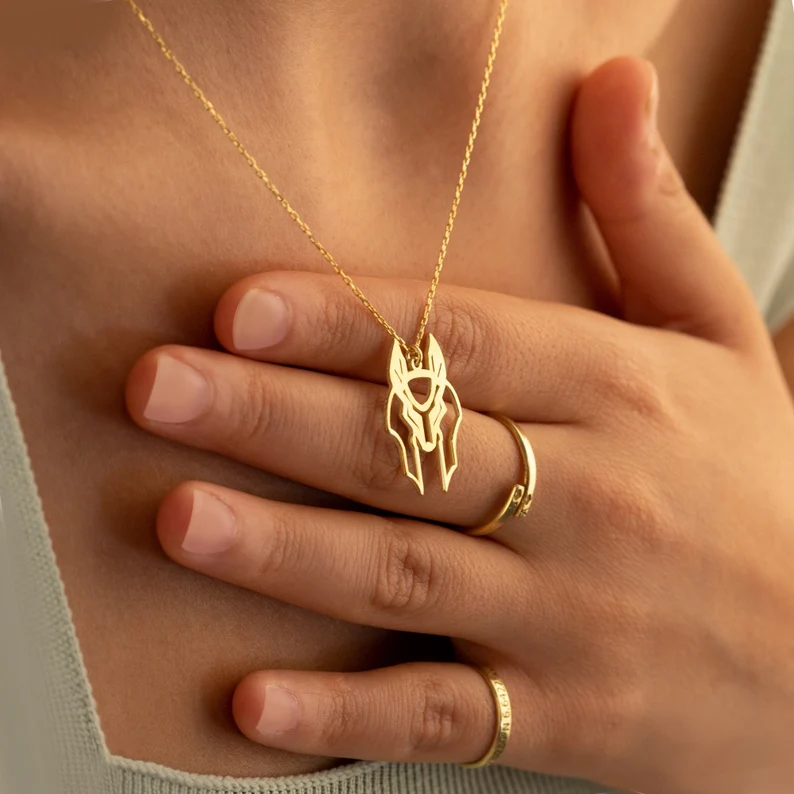
Ancient Egypt, between 3,000 and 5,000 years ago, marked the beginnings of jewelry production. The Egyptians adorned themselves with various necklace designs for celebrations, religious events, and funerals, often using precious materials for these collars.
To them, necklaces transcended mere decoration. They prized gold for its luster, rarity, and malleability. The abundant gold from African deserts, supplemented by tributes from conquered lands, allowed Egyptians to use jewelry as a status symbol. Wealthy Egyptians would even take their gold into the afterlife, wearing it in burial to signify their status.
Necklaces In Greece
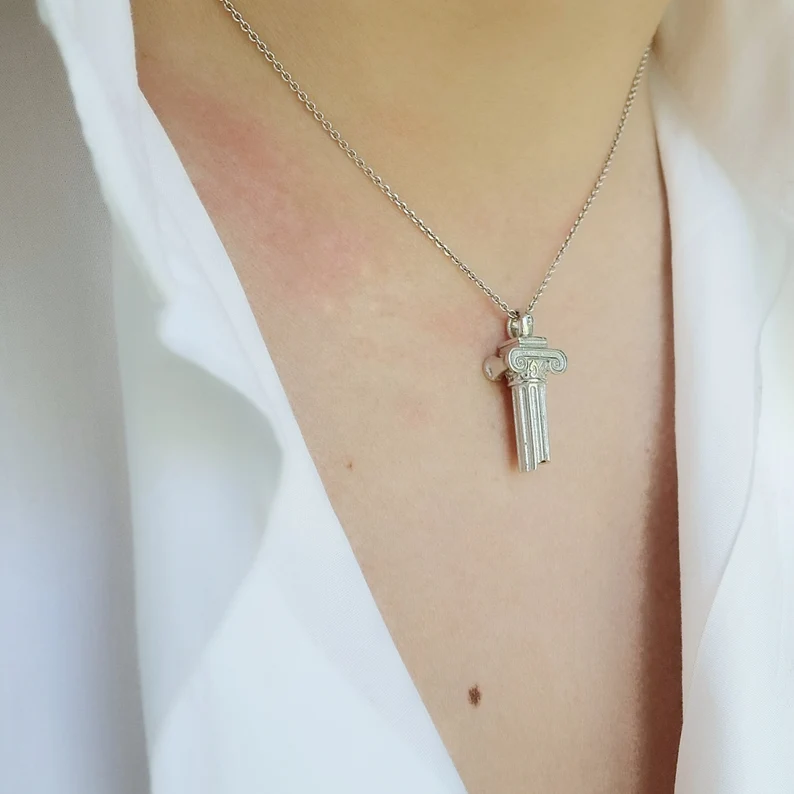
Goldsmiths in ancient Greece mastered jewelry making, often using materials like gold, silver, ivory, gems, bronze, and clay. European styles first shaped their work until Alexander the Great’s conquests exposed them to Asian artistry, inspiring a new, blended style in necklaces and other pieces.
The Roman Empire’s rise in 27 BC further changed Greek jewelry. Roman tastes and techniques influenced Greek jewelers, who began crafting necklaces that not only adorned but also showcased the cultural shifts and artistic advancements of their time. These necklaces now told stories of influence and change in Greek society.
Necklaces In Italy and Byzantine
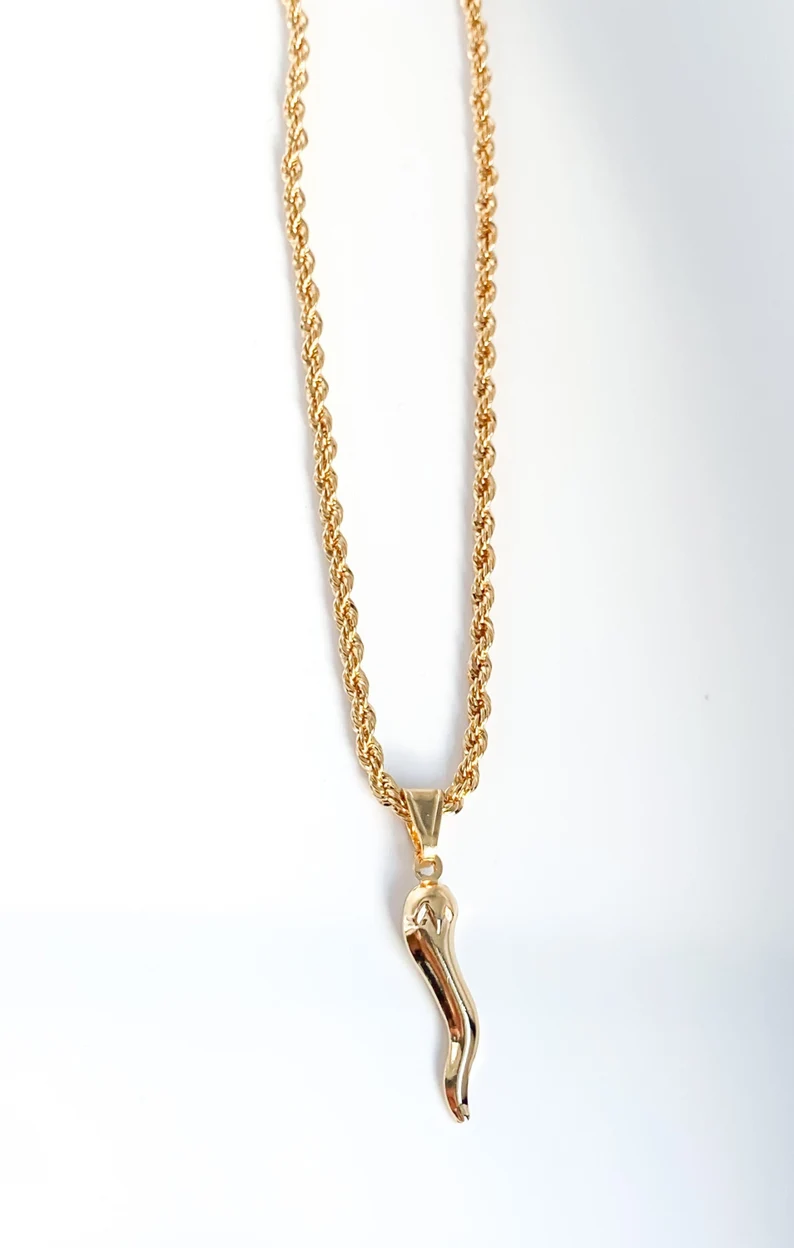
In the past, the Italians used raw gold to make clasps, necklaces, earrings, and bracelets. There were also big pendants often filled with fragrances to ensure that the wearer smelled nice. The Byzantine Empire, seen as the eastern successor to the Romans, carried on the Roman heritage even though religious symbols were the dominant designs.
The Byzantine populace favored jewelry made of pale gold with numerous gem inlays. Wealthy women tended to wear a variety of jewelry types, whereas men mostly wore signet rings.
Necklaces In India

While there is no consensus, there are others who hold the popular belief that the longest-running jewelry-making tradition is in India. The inhabitants of the Indus Valley produced their earrings and necklaces out of gold, beads, and other metals around 1,500 BC.
Women favored headbands, chokers, brooches, and earrings and wore clay and shell bracelets that were typically painted black. Clay was gradually replaced by glass and metal.
Necklaces In the Gothic Era
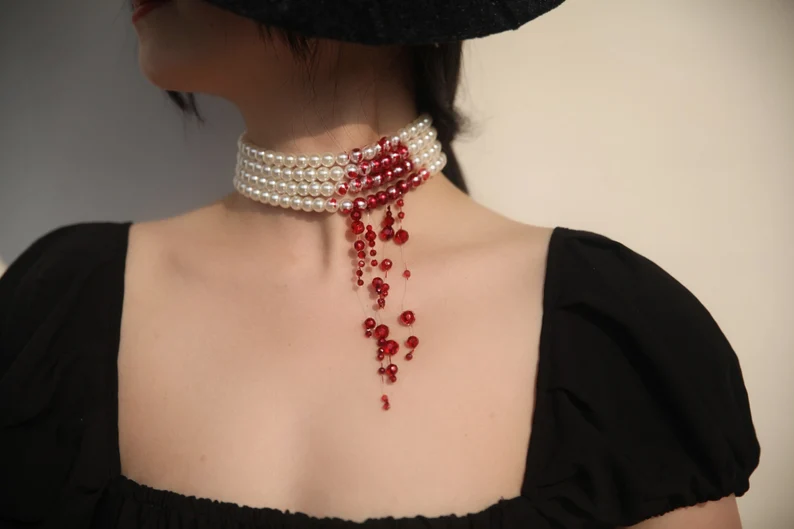
In the West, necklaces were once considered a symbol of riches, power, and status in several societies. However, the Gothic era, which lasted between 1150 and 1450 CE, was one of the only eras in history when necklaces weren’t as popular in the West. During this period, there were some records of necklaces made of diamonds, pearls, and rubies.
Use of Necklaces in the Middle Ages
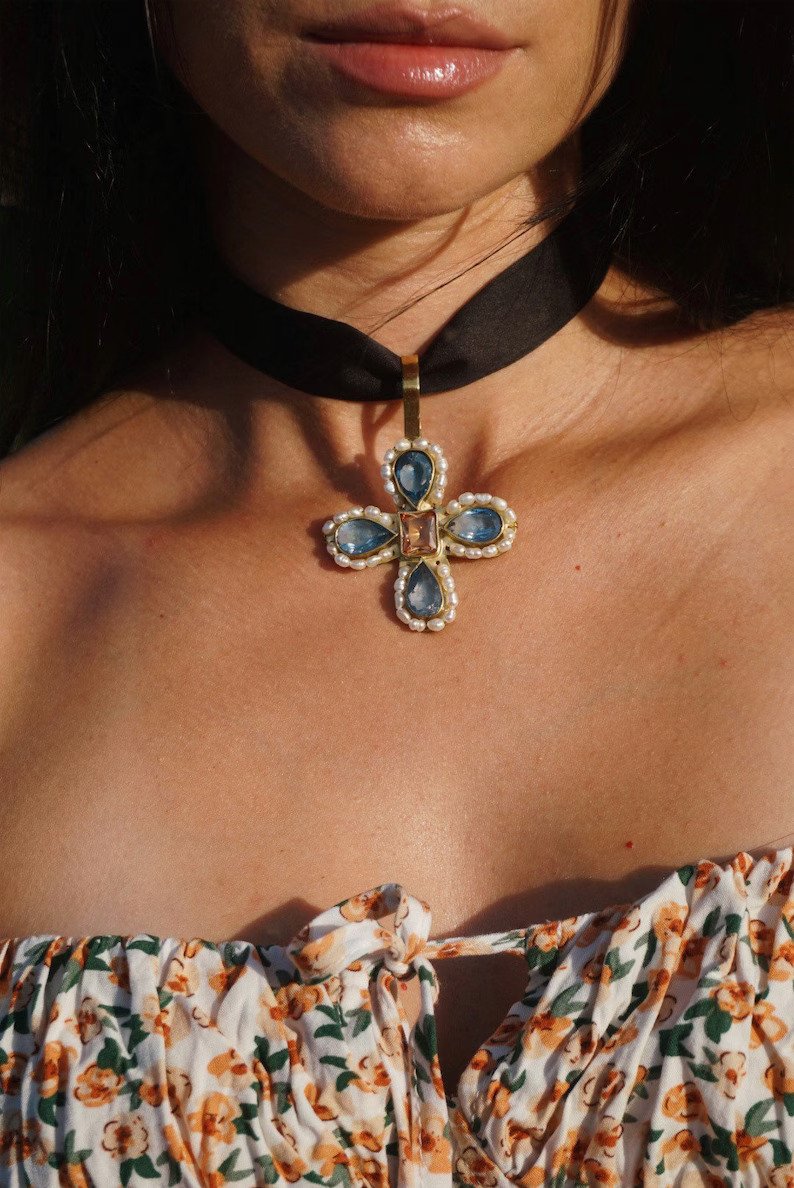
Throughout the Middle Ages, during the early Renaissance, necklaces began to outshine brooches as the favored form of jewelry. Designs often featured gemstone settings or thick gold chains with pendants, signaling wealth.
Lower necklines in clothing, common from the 14th to the 17th century among the affluent, boosted necklace popularity. Fashion trends in necklaces during this time largely mirrored American and European influences.
Women typically chose necklaces to complement low necklines and forwent them when fashion dictated higher necklines.
The Symbolic Meaning of Necklaces in Various Cultures
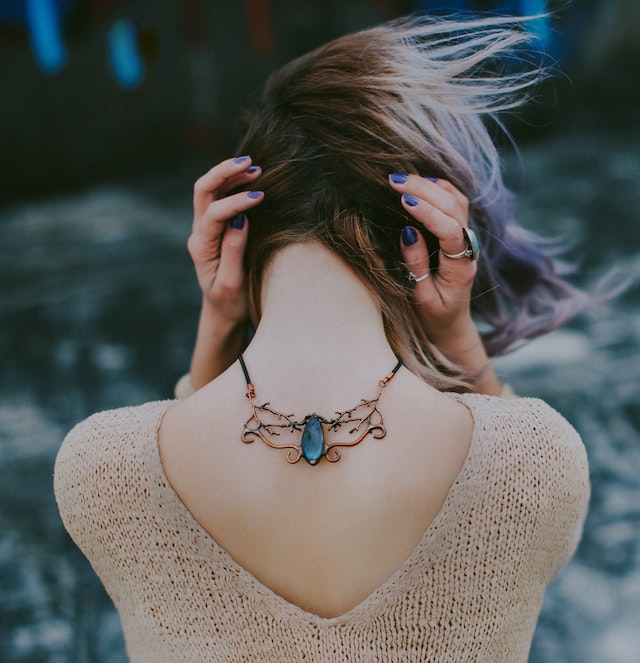
On a general note, the design and additions made to a necklace have an impact on its meaning. Something unique about the necklace is the strong symbolism it holds, and its significance is reflected in each of the regions in the world.
What Do Necklaces Symbolize in Africa?
Necklaces hold deep cultural, social, and spiritual meaning in Africa, symbolizing concepts like wealth, status, connection, and faith. Beads and necklaces often mark life’s milestones, showing a person’s progression through different life stages. The materials used, such as gold, silver, or precious stones, can indicate a person’s wealth and social standing.
As talismans or amulets, necklaces are thought to protect against evil or bring luck. In religious or spiritual rituals, they connect people to the divine or their ancestors. Specific patterns and designs in necklaces express ethnic and tribal identities, anchoring them as key elements of personal and shared identity.
Necklaces also act as storytellers, capturing and conveying vital historical, family, or mythological stories through beads and designs. They serve as a link between generations, keeping traditions alive in a form of adornment that is both personal and universally acknowledged.
What Do Necklaces Symbolize in Europe?
In Europe, people have long used necklaces to show their social rank, wealth, and beliefs. The elite wore intricate gold chains, while commoners might wear simple crosses, showing both their place in society and their religious ties.
The rich adorned themselves with diamonds and pearls, but everyday folk and craftspeople chose simpler, less expensive materials. Beyond showing status, necklaces hold personal significance, with lockets and pendants often carrying cherished memories and bonds.
Additionally, distinct necklace styles from various European regions like the Nordic countries, the Mediterranean, and Eastern Europe showcase the continent’s cultural diversity and creative history.
What Do Necklaces Mean in Asia?
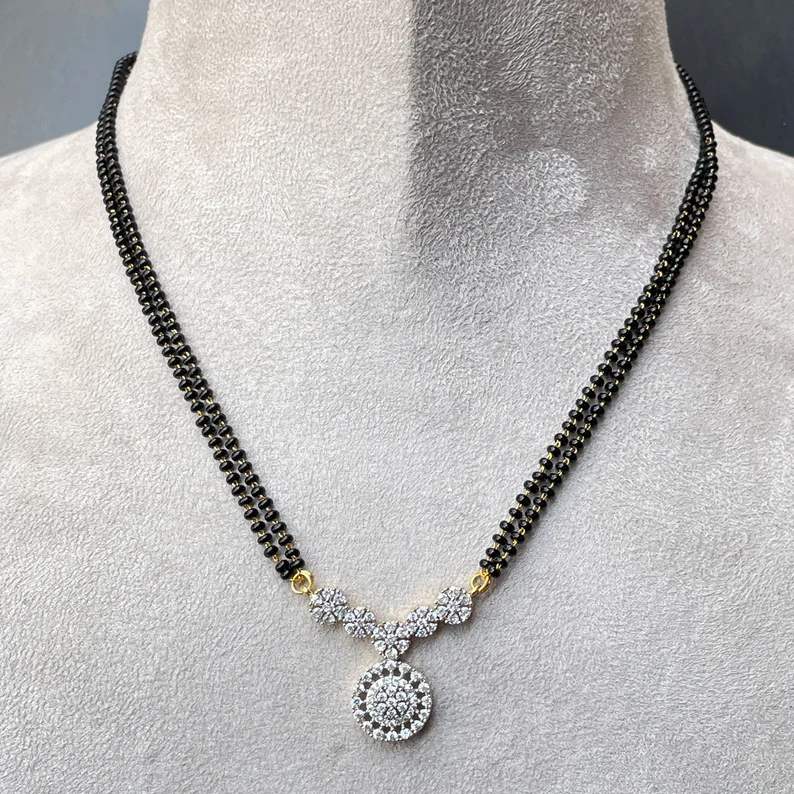
In Asia, necklaces serve as powerful symbols of cultural values, social status, and spirituality. The wealthy often wear gold and gemstone necklaces to show their status. In places like India, the ‘mangalsutra‘ necklace is a sign of marriage and spousal well-being.
Necklaces also have spiritual roles, such as jade pieces in China, believed to bring luck and health. People wear amulet necklaces for protection and to draw in good energy. The detailed artistry in Asian necklaces often reflects ancestral heritage, with unique patterns showcasing a person’s cultural background.
Beyond mere decoration, these necklaces tell the rich stories of Asian communities and their traditions.
What Do Necklaces Mean in Latin America?
In Latin America, necklaces carry deep cultural meaning and express personal identity. Indigenous designs and natural materials link wearers to their ancestral history and pre-Columbian roots. Turquoise, silver, and detailed beadwork in necklaces are common and represent beauty and cultural honor.
Catholic symbols like the Virgin Mary or the crucifix often decorate these pieces, showing the region’s strong religious connections. As amulets, many believe necklaces can protect the wearer or bring good luck, mixing native and European traditions.
People give necklaces during celebrations or to mark important life events, highlighting their role in social and family customs. Necklaces in Latin America, therefore, are vibrant emblems of the region’s historical, spiritual, and community bonds.
What are Necklaces Used For?
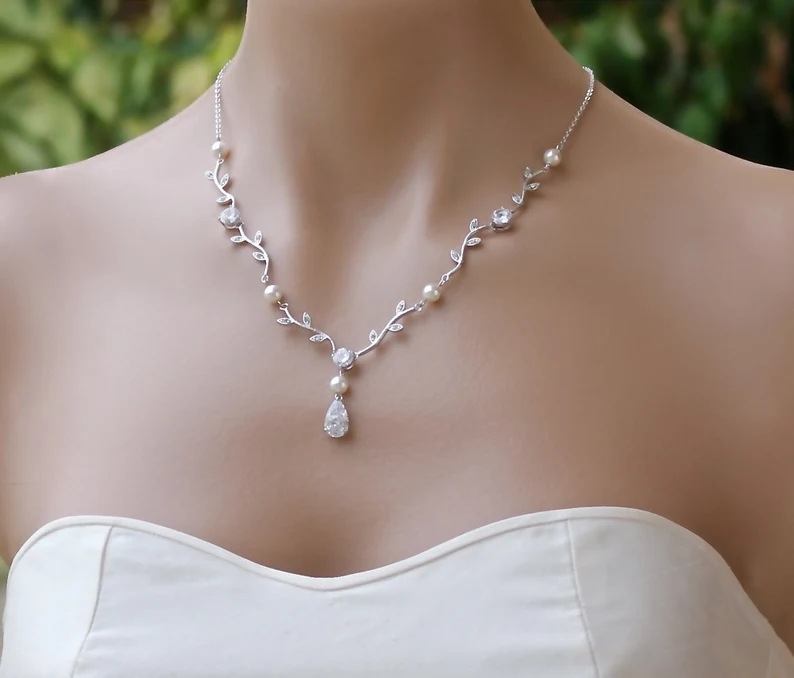
1. As a Fashion Accessory
A necklace can complete an outfit and highlight someone’s style. It might stand out on its own or match the clothes, bringing in different layers, textures, and colors. Big, bold necklaces turn plain outfits into something striking, while simple chains give a touch of elegance to casual looks.
The type of necklace someone picks—whether it’s flashy, simple, fancy, or plain—shows off their personal taste and can say something about who they are, making necklaces a key part of dressing up with style.
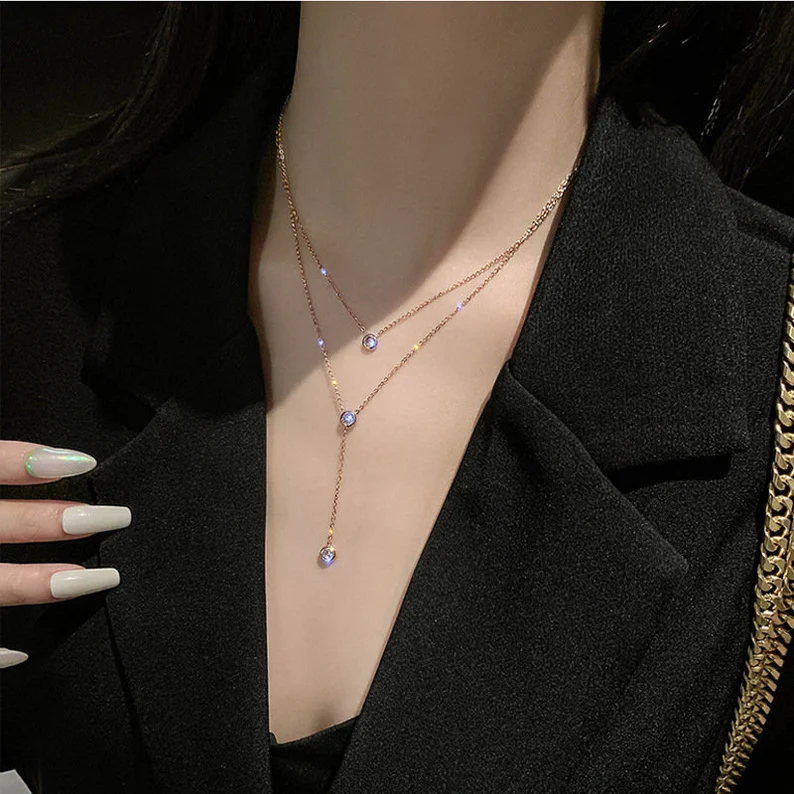
2. As a Status Symbol
Necklaces can show off wealth or social status. Made from gold, diamonds, or pearls, an expensive necklace quickly tells others about someone’s rich status or high social standing. Kings and nobles in the past wore fancy necklaces to display their power and high rank.
Nowadays, the make, style, and materials of a necklace can quietly or clearly show how rich or important someone is in society. In various cultures, wearing a fancy necklace is more than fashion; it’s a symbol of success and respect.
3. As a Cultural Emblem
Necklaces often represent cultural or ethnic backgrounds, showcasing a community’s heritage and customs. They can include distinctive designs, colors, and materials handed down over time, each with its own cultural significance.
Indigenous patterns, gems from the area, and age-old making methods might make up these necklaces, celebrating the wearer’s heritage and story. Wearing such necklaces allows people to express their historical roots and connect with their cultural group visibly.
4. For Religious Purposes
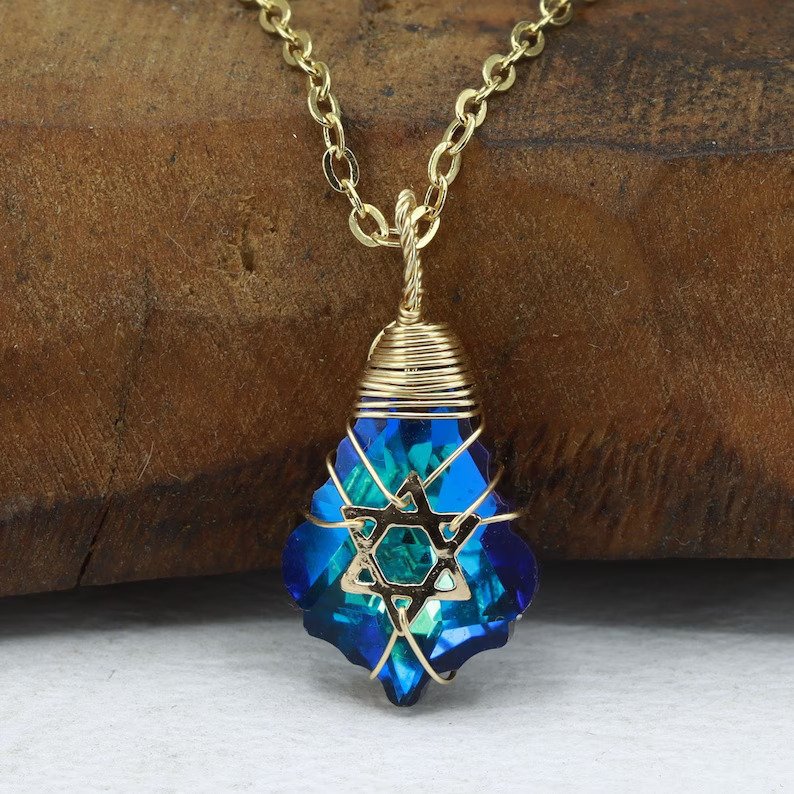
Necklaces often show religious faith, featuring symbols like crosses, Stars of David, or crescents. People wear these symbols around their neck to keep their spiritual beliefs and religious teachings close.
These necklaces do more than show devotion; they can also comfort and empower, making the wearer feel connected to their god. Wearing these holy signs near the heart, believers feel a personal and protective link with their faith.
5. For Functional Wear
Necklaces aren’t just for looks; they also hold everyday items like eyeglasses and ID tags. When someone hangs glasses or an ID on a necklace, they can grab them quickly anytime. This is really handy for people who read with glasses often or need to show their ID a lot.
These necklaces mix usefulness with fashion, giving a clever way to keep important items close without losing or forgetting them.
6. As a Gift
Giving a necklace as a gift often shows love and care. It’s a popular choice for birthdays, anniversaries, or to say thank you. Picking out a necklace for someone can express love, friendship, or respect. The receiver might keep the necklace forever, remembering the person or special time it stands for.
When you choose a necklace that suits someone’s taste or celebrates an important event, it becomes a very personal and valued present. Giving someone a necklace can make a relationship stronger and create lasting memories.
7. For Protection
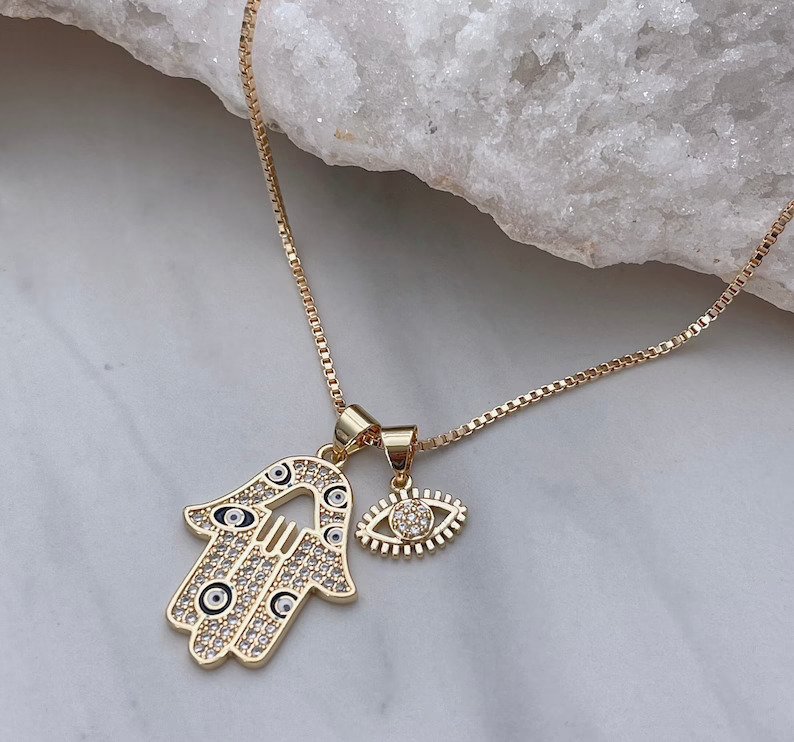
People wear protective necklaces with symbols or charms to block bad energy and attract good luck. These necklaces often have symbols like the evil eye or natural elements like crystals that many believe can protect them.
Wearing these necklaces, people feel safe from harm and hopeful for positive vibes. This old practice of using necklaces for protection is still important in many spiritual and religious customs around the world.
8. To Preserve Memories
Necklaces often hold onto memories, especially when they carry photos or small keepsakes in lockets. People pass these necklaces down through families, and they gather stories and meaning over time.
They mark special times like graduations, marriages, or new babies, acting as a link to those events. When worn, they bring the past close and remind us of the people and moments we treasure.
9. To Mark Significant Milestones in Life
Necklaces often symbolize important life events. People give them as gifts for major birthdays, graduations, or anniversaries to honor these times. Wearing these necklaces is like wearing a medal that celebrates a personal milestone.
They remind us of our achievements and life changes. Over time, these pieces of jewelry often become valuable family treasures, passed down to remember those big moments.
10. As an Investment
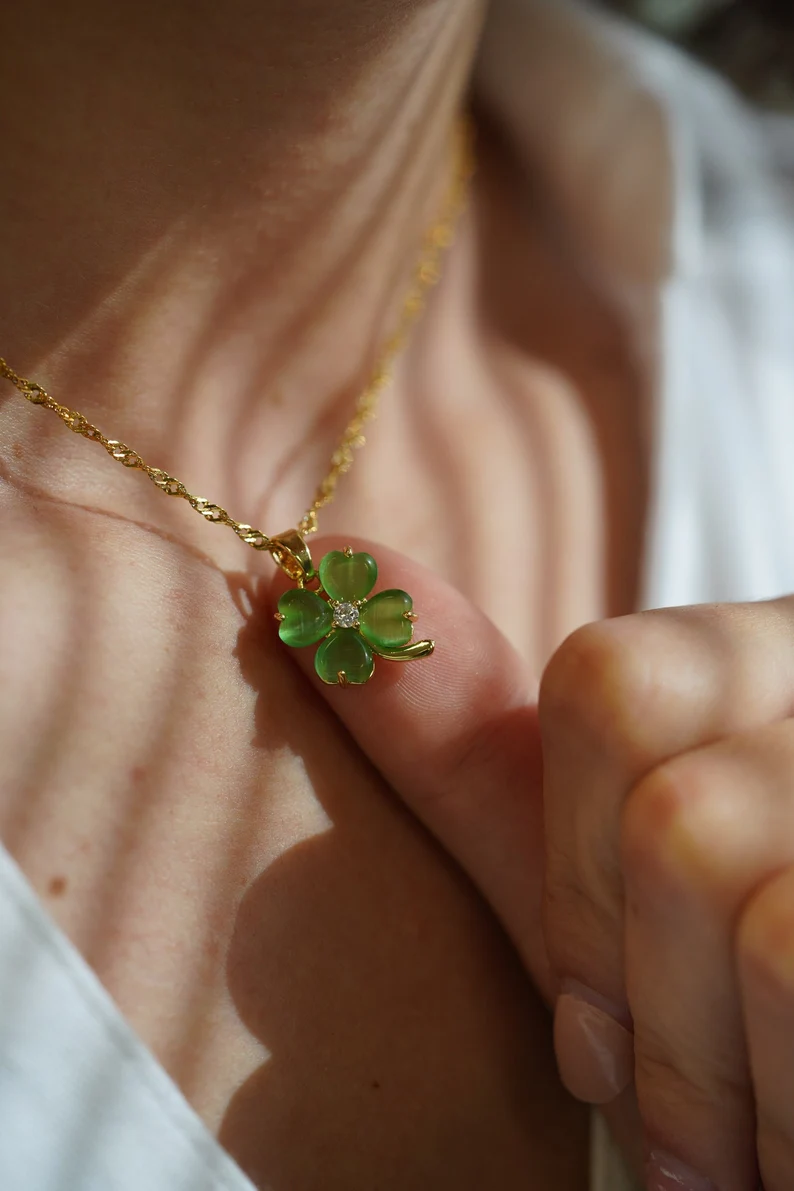
Necklaces made of gold, diamonds, or rare gems can be good investments. Their materials can go up in value, so buying quality necklaces might help you save money for later. Some investors buy unique or old necklaces because being rare can make them worth more.
People don’t just enjoy wearing these necklaces; they also see them as something they can sell for more money later on. These pieces are both enjoyable to wear and smart for money planning.
Fun Facts about Necklaces
- The oldest known necklace is approximately 25,000 years old, made from fish bones, found in a cave in Monaco.
- During the Renaissance, people in Europe wore necklaces with pendants called “pomanders” that contained perfumes or herbs to ward off infections and bad smells.
- In ancient Egypt, the broad collar necklace, known as a “wesekh”, was often worn by pharaohs and gods depicted in art, symbolizing status and religious authority.
- Certain tribes in Africa, like the Batonga of Zimbabwe, once used necklaces with beads made from bone, seeds, or shells as currency for trade.
- In the 16th and 17th centuries, some necklaces included “memento mori” pendants, designed to remind the wearer of their mortality with symbols like skulls.
- Suffragettes in the early 20th century used necklaces with green, white, and violet stones, which stood for “Give Women Votes”.
- The bolo tie, which is a form of neckwear, was made the official neckwear of Arizona in 1971. It’s a simple piece of cord with decorative metal tips and a slide, and it’s seen as a form of necklace.
- The use of necklaces to hold eyeglasses was patented in the 20th century, combining fashion with function in what would become known as “eyeglass necklaces” or “necklace glasses”.
- The Patiala Necklace, created by Cartier in 1928 for the Maharaja of Patiala, was one of the most expensive pieces of jewelry ever made, containing over 2,930 diamonds including the world’s seventh-largest diamond at that time, the “De Beers”.
- The famous novel “The Necklace” by Guy de Maupassant revolves around a necklace made of paste, which is a cheap glass imitation of diamonds, illustrating the necklace’s powerful symbolism and the deception of appearances.
Wrapping Up
Necklaces are a great way to showcase your unique style and personality. And this has been something that humans have known since time immemorial.
Whether you choose to wear a necklace simply for the beauty of the piece, or for protective, religious, ritualistic, or status reasons, one thing remains true for everyone – a necklace tells others a lot about who you are.









